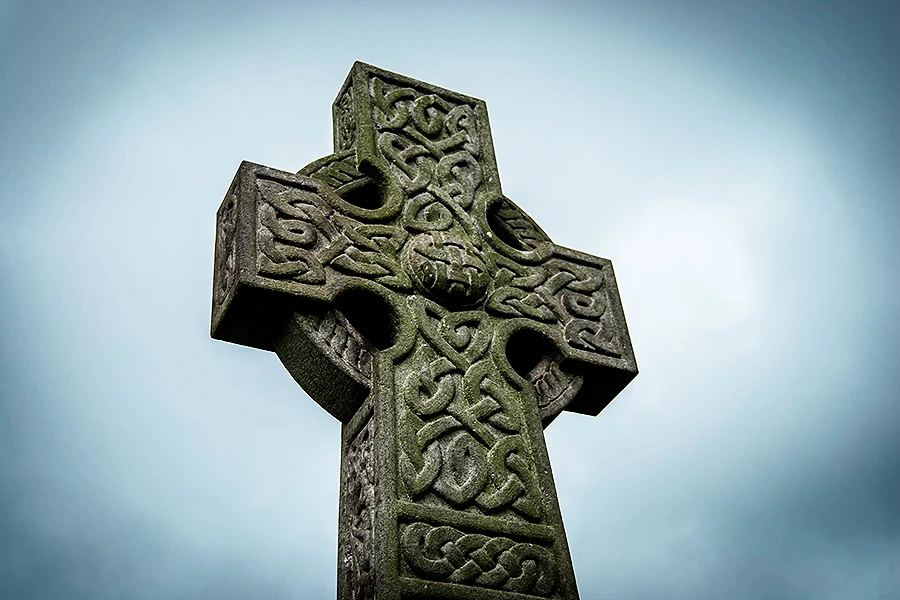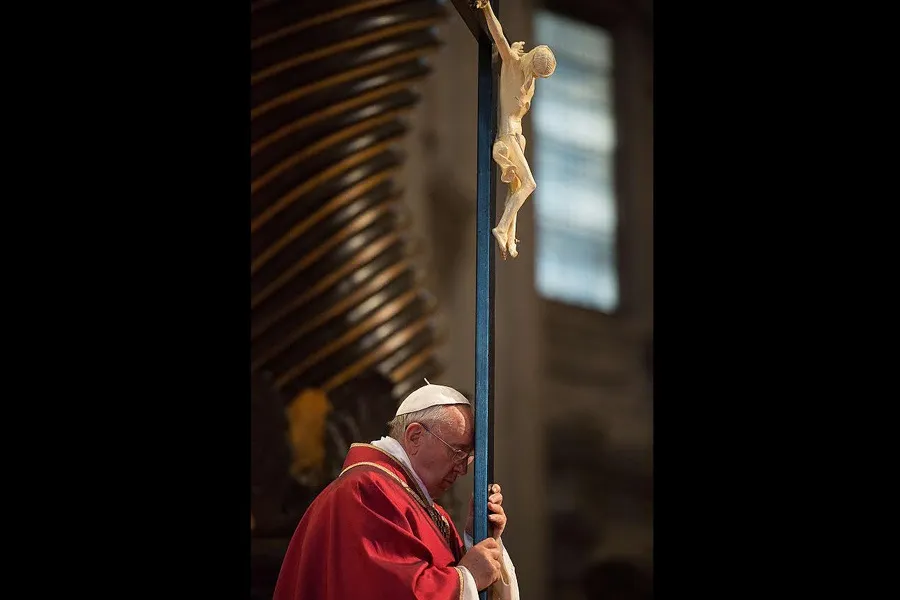
Denver, Colo., Mar 17, 2017 / 02:50 am (CNA/EWTN News).- They’re Irish, they’re Catholic, and they’re proud. But you maybe haven’t heard of them.
They’re the Ancient Order of Hibernians and the Lady’s Ancient Order of Hibernians, the oldest and largest Irish Catholic organizations in the United States.
Non-Irish need not apply to the orders – membership is reserved for those who can prove that at least some Irish blood flows through their veins. The word ‘Hibernian’ is another word for Irishmen, taken from ‘Hibernia’, the classical Latin term for Ireland.
Members also must be practicing Catholics willing to stand up for and support the Catholic Church.
Today, the order functions similarly to other Catholic charitable organizations, such as the Knights of Columbus, but with an Irish twist. They support many Catholic causes such as vocations and pro-life work, but they also promote Irish culture and education on Irish history, and help modern-day Irish immigrants to the U.S. and support a free and united Ireland.
“If you had a group of us in a room you’d have twice as many opinions as you’d have people,” Danny O’Connell, National Vice President for the Ancient Order of Hibernians in America, told CNA.
“But the thing that pulls us all together is our culture, our music, our traditions, many of which came from the immigrants.”
Why the Ancient Order?
The orders come from a time when secret societies were in vogue, and the stakes were much higher.
After the Protestant Reformation, the English, who had conquered Ireland, tried fiercely to convert the stubborn Irish Catholics, to little avail. Irish Catholics soon became accustomed to “Mass rocks”, where a priest would say Mass outside on a rock and quickly be able to hide the altar cloth and feign a picnic if they were found out.
At this time, secret groups with names like the Whiteboys, Ribbonmen, and Defenders supported rights for Catholics, but their first job was to protect their clergy. Despite persecution, the Catholics clung fiercely to their faith.
As Catholic oppression continued and crop failures struck Ireland in the 18th and 19th centuries, the Irish began to move, and their secret societies, now a learned defense mechanism, came with them. It was around this time that the Ancient Order of Hibernians in Ireland and the UK was born.
Many Irish also immigrated to the United States, with more than 1 million doing so around the time of the Irish potato famine between 1845-1852. So many sick Irish died on the trip that the boats that brought them over began to be referred to as “coffin ships.”
“When people refer to the famine, most of the Irish see it as a genocide,” O’Connell explained. “It was the Great Hunger. They were exporting more food from Ireland than they are today, yet the Irish Catholics were dying and their teeth would be stained green because the only thing they could even try and eat was the grass. It was the British government starving the people who weren’t allowed to eat the food on their land except for the potatoes, and it was land that the British stole from us.”
But despite promises of religious freedom, the Irish found that United States was also hostile to Catholicism, under the guise of patriotism.
Since colonial times, Americans had been suspect of Catholics from all immigrant groups, suspicious that their allegiances to the Pope would trump their loyalty to the U.S.
“Like any immigrant group, when you were new in the U.S., you were low on the totem pole, you were the ones abused and beaten and robbed and not given good jobs,” O’Connell said.
“And people didn’t understand Catholicism, so they would prevent you from practicing your religion. So if you were having a Mass, they would beat up or often kill the priest … so the Hibernians would stay outside or wherever they were, and stand guard. Back in those days that’s what you did, you stood outside and protected the life of your priest, and that was the only way you could continue practicing your religion,” he said.
The Hibernians also helped their own to overcome discrimination when they were looking for housing and employment. In 1894, the Daughters of Erin, which eventually became the Ladies Ancient Order of Hibernians, was founded in order to protect young Irish immigrant women in the United States.
The Hibernians today
A strong Irish Catholic identity, forged in the overcoming of numerous adversities, can still be felt strongly in many parts of the United States, and is what bonds the Hibernians together today.
Marilyn Madigan, the National Treasurer for the Ladies Ancient Order of Hibernians, said the camaraderie among the early Hibernians can still be felt strongly in the organization today.
“It’s the best organization I’ve ever belonged to, we’re like a second family,” she said.
Madigan said one of the most important things the orders do today, besides their Catholic charitable work, is to help undocumented Irish immigrants in the United States, of whom there are an estimated 50,000. Most of them entered the country legally, but are now here on overstayed visas.
Fears and anxiety are even higher among this group after the election of President Donald Trump, who promised to crack down on illegal immigration.
“There are a lot of undocumented Irish in this country, and most of the Irish organizations do work to try to document those Irish, so we haven’t forgotten where we came from, we hold that country dear to our hearts, as well as our religion,” Madigan said. In fact, the two are really inextricably linked.
“Most of the famine Irish were Catholic, their religion was taken away from them, they had to go to Masses behind rocks, so our Irish and Catholic heritage is very important,” she said.
Because the orders are non-profit groups, they do not engage in any kind of lobbying for Irish immigration, and they also declined to comment politically on the immigration situation of other undocumented immigrants in the United States.
A completely free and independent Ireland is another cause near and dear to the Hibernian heart, and the group hopes to see a peaceful and legal reunification of the country soon, though Brexit has raised some doubts.
“We’re very involved with Brexit, the fear is that we could see a return to a hard border between the North and the Republic,” O’Connell explained. Ireland and Northern Ireland (the six northern counties that still belong to the U.K.) have enjoyed relatively open borders since the 1990s, to the benefit of both countries’ economies, he added. Several members of the order will be travelling to Europe to voice their support for an open border.
The diversity of causes that the order supports and the faith that undergirds it continues to tie them together, O’Connell said.
“The culture, the music, the song, that brings us all together, and it’s kind of like with a family … and it’s driven by being Catholic. There’s not another Irish group in the country that has that diversity, and that’s why we’re so strong.”
But membership is waning. The women’s and men’s orders combined have a membership of about 80,000 in the U.S., at a generous estimate. It’s something that has both O’Connell and Madigan concerned.
“It seems like the younger generations do not join organizations like we have in the past,” Madigan said. “It seems like the younger generation, while they’re proud of their heritage, they don’t join, or they may join or not be as active.”
“We’re trying to do a better job of welcoming people who are younger than 60,” O’Connell said.
“We’re in the process of really kicking off what’s going to be a several-year membership campaign. We’ve never really done that before, and we realize how many people say, ‘I don’t know anything about this, why don’t I?’”
What a Hibernian wants you to know about St. Patrick’s Day
While you might think you’d find a Hibernian dressed in green and drinking steadily like the stereotypical St. Patrick’s Day celebrant, there are a few things the Hibernians wish the general population understood about the holiday.
“First and foremost, to a true Irishman, St. Patrick’s Day is a feast day,” Madigan said.
“We start out with Mass, with the majority of us participating in parades prior to or on the day itself, where we highlight our Irish heritage.”
Getting drunk, she said, is not part of the plan.
“The things that upset me the most is that people think it’s just a day to go out and celebrate and imbibe in alcoholic beverages, and maybe be overserved,” she said.
“They wear shirts that are very denigrating to the Irish, making us look like we’re a race of drunks. We’re not, we’re a proud irish race that has spread Christianity throughout the world through our missionaries. And I don’t think that the general public really sees what we do.”
O’Connell said that he is also “very disturbed” by the T-shirts and decorations that denigrate the Irish.
“What I try to tell people when I talk to them about it, is I say change it to a different nationality, change it to a different race … can you imagine?”
St. Patrick’s Day is also an Irish-American holiday, he added. We eat corned beef and cabbage because that’s what the Irish immigrants in America ate because they couldn’t afford other cuts of meat. They wanted to celebrate St. Patrick’s Day in a big way because they wanted to feel close to their Irish heritage. It wasn’t until recently that the holiday became anything more than any other feast day in Ireland, and they only started holding big celebrations for tourism purposes.
Still, he said, it’s hard to completely blame those who want to be Irish for a day.
“Being Irish is just so much fun.”
 […]
[…]









May all human beings be blessed with conducive atmosphere to enjoy and celebrate the gift of life rendering thanks to the Giver of life.
Your “conducive atmosphere” relates a depiction of what one of the concrete intentions or aims of synodalism, is.
In my opinion, another concrete intention of synodalism is to elevate charismatic type get-together as a “natural expression of the Holy Spirit brought to perfection” in synodalism. Which is not synod, just a prayer meeting; however Grech let slip when he staked his claim that it is “prayer, liturgy and pentecost”.
The new secrecy imposed for the given reason “freedom of expression” is really for the reason of shrouding the ones who are intimately connected in the elevation.
If you visit where I live you would get a first-hand view and experience of a charismatic synodalistic prayer-meeting. You do not have to attend in person, you will see it broadcast on TV -live too. It has become highly stylized since it has had more than 25 years of practice; however the germ of it is still its “synodalism”.